Themed collection Journal of Materials Chemistry C Emerging Investigators

Contributors to the Emerging Investigators 2021 issue
Journal of Materials Chemistry C profiles contributors to the Emerging Investigators issue.

J. Mater. Chem. C, 2021,9, 11396-11406
https://doi.org/10.1039/D1TC90183D
2D material hybrid heterostructures: achievements and challenges towards high throughput fabrication
2D materials display unique optical/electronic/mechanical properties and a manipulable bidimensional morphology. High throughput assembly processes can be applied for their large scale manufacturing leading to integration into mass produced products.
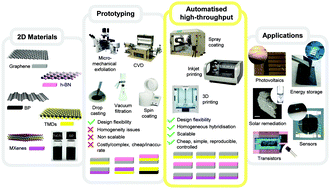
J. Mater. Chem. C, 2021,9, 15721-15734
https://doi.org/10.1039/D1TC04253J
Colorimetric metasurfaces shed light on fibrous biological tissue
Fibrotic diseases affect all human organs (left), yet the selective visualization of tissue microstructure remains challenging in clinical and industrial settings. Colorimetric metasurfaces (right) address this challenge with an on-chip platform.
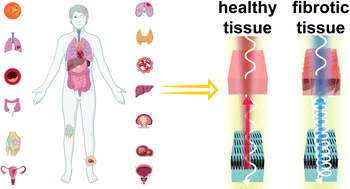
J. Mater. Chem. C, 2021,9, 11619-11639
https://doi.org/10.1039/D1TC02030G
π-Conjugated organosilanes at the nexus of single-molecule electronics and imaging
This article explores the fundamental σ-π orbital interactions that underlie the physical properties of conjugated organosilane molecular materials in single-molecule electronics and single-molecule imaging.
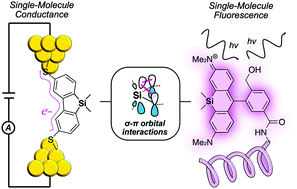
J. Mater. Chem. C, 2021,9, 11605-11618
https://doi.org/10.1039/D1TC02033A
Quantum materials with strong spin–orbit coupling: challenges and opportunities for materials chemists
The physics of materials with strong spin–orbit coupling is currently highly topical. Here we present an accessible outline of the chemistry of these materials, issues in determining their structure–property relationships, and opportunities afforded.
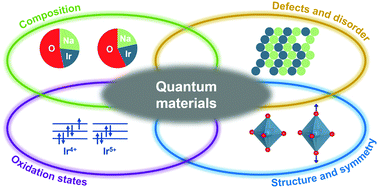
J. Mater. Chem. C, 2021,9, 11640-11654
https://doi.org/10.1039/D1TC02070F
Halide perovskites scintillators: unique promise and current limitations
The origins of the remarkable performance of halide perovskite scintillators are presented, along with solutions to the challenges facing the field, followed by a discussion of applications that will benefit from the unique properties of these materials.
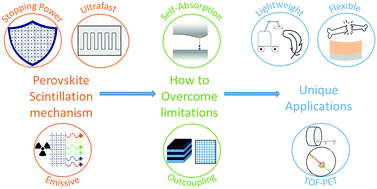
J. Mater. Chem. C, 2021,9, 11588-11604
https://doi.org/10.1039/D1TC01595H
Magnetic cellulose: does extending cellulose versatility with magnetic functionality facilitate its use in devices?
The preparation, properties and use of magnetic cellulose are reviewed with focus on use in devices.
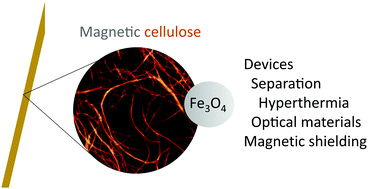
J. Mater. Chem. C, 2022,10, 805-818
https://doi.org/10.1039/D1TC02105B
Electrochemical construction of functional polymers and their application advances in lithium batteries
Electrochemical methods are commonly used in the preparation of functional polymers on flexible conducting substrates to design and fabricate advanced electronic devices.
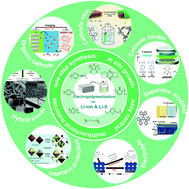
J. Mater. Chem. C, 2021,9, 17182-17200
https://doi.org/10.1039/D1TC05311F
Computational techniques for characterisation of electrically conductive MOFs: quantum calculations and machine learning approaches
Computational approaches accelerate design and discovery of conductive metal–organic frameworks (MOFs).
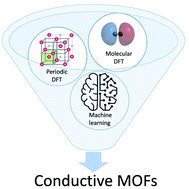
J. Mater. Chem. C, 2021,9, 13584-13599
https://doi.org/10.1039/D1TC02543K
Nonlinear optical probes of nucleation and crystal growth: recent progress and future prospects
Nonlinear optical techniques are emerging as powerful in-situ probes of crystallization processes due to their inherent sensitivity to crystal structure and morphology.
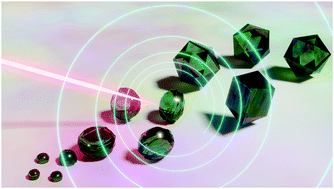
J. Mater. Chem. C, 2021,9, 11553-11568
https://doi.org/10.1039/D1TC02007B
Towards practical and sustainable SERS: a review of recent developments in the construction of multifunctional enhancing substrates
Here, we review the state-of-the-art progress in the construction of smart multifunctional enhancing substrates. These substrates hold the key to achieving sustainability and widespread applications of SERS.
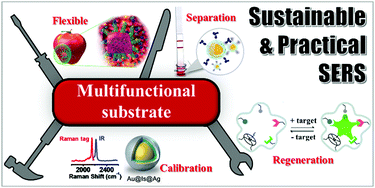
J. Mater. Chem. C, 2021,9, 11517-11552
https://doi.org/10.1039/D1TC02134F
Molecular functionalization of 2D materials: from atomically planar 2D architectures to off-plane 3D functional materials
The functionalization of 2D materials (2DMs) holds great promise future applications. Here we review the various ways in which 2DMs can be functionalized and how these methodologies influence the physicochemical properties of resulting 2DM composites.
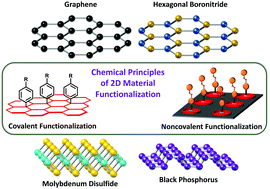
J. Mater. Chem. C, 2021,9, 11569-11587
https://doi.org/10.1039/D1TC01534F
Aggregation-induced emission for the visualization of the structure and properties of polymers
This review summarizes the application of AIE molecules in the study of the structure and property of polymers, and the prospect of development by AIE molecules in the polymer field.
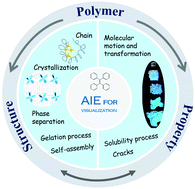
J. Mater. Chem. C, 2021,9, 11484-11496
https://doi.org/10.1039/D1TC01531A
Nanoscale molecular layers for memory devices: challenges and opportunities for commercialization
The present review describes recent developments in nanoscale molecular films, and discusses why devices comprising redox-active organic, organometallic, complexes, and biomolecules might hold the potential for next-generation electronic applications.

J. Mater. Chem. C, 2021,9, 11497-11516
https://doi.org/10.1039/D1TC01283E
Multifunctional layered hybrid perovskites
Layered hybrid perovskites incorporating organic moieties with enhanced functionalities within the perovskite scaffold enable the development of advanced multifunctional materials.
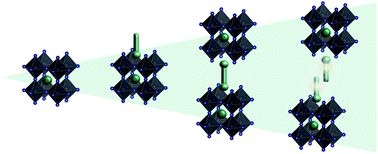
J. Mater. Chem. C, 2021,9, 11428-11443
https://doi.org/10.1039/D1TC01533H
Fermi-level depinning of 2D transition metal dichalcogenide transistors
In this review, we summarize the recent progress on how to circumvent FLP between 2D TMD semiconductors and metals.
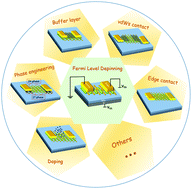
J. Mater. Chem. C, 2021,9, 11407-11427
https://doi.org/10.1039/D1TC01463C
Thin-film transistors for emerging neuromorphic electronics: fundamentals, materials, and pattern recognition
This review paper provides an overview of the recent successful simulation of pattern recognition with TFT-based artificial synapses from device- to system-level.
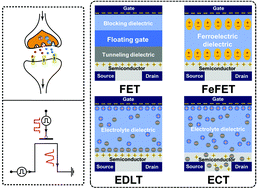
J. Mater. Chem. C, 2021,9, 11464-11483
https://doi.org/10.1039/D1TC01660A
Solar energy conversion and storage by photoswitchable organic materials in solution, liquid, solid, and changing phases
This review illustrates structural design principles for molecular solar thermal (MOST) energy storage materials based on photoswitches that operate in different phases or result in a solid–liquid phase transition during their photo-isomerization.
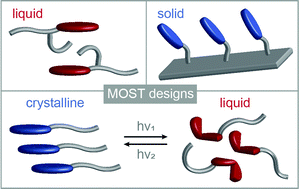
J. Mater. Chem. C, 2021,9, 11444-11463
https://doi.org/10.1039/D1TC01472B
Direct laser writing of vapour-responsive photonic arrays
Combining structural design (led by FDTD simulations) and innovative hydrogel materials (via ionic liquid cosolvents), we fabricate dynamic responsive photonic arrays.
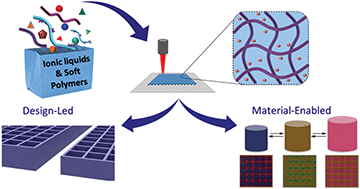
J. Mater. Chem. C, 2021,9, 11674-11678
https://doi.org/10.1039/D1TC01796A
Synthesis of monodispersed VO2@Au core–semishell submicroparticles and their switchable optical properties
Monodispersed VO2@Au core–semishell submicroparticles have been synthesized and optically characterized. The single-particle spectra demonstrate that the plasmonic resonance is temperature-dependent and reversibly tunable in the range of over 200 nm.
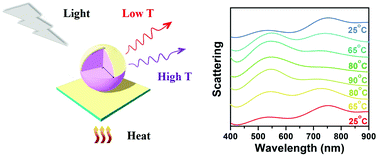
J. Mater. Chem. C, 2021,9, 11669-11673
https://doi.org/10.1039/D1TC01379C
Fully-printed flexible n-type tin oxide thin-film transistors and logic circuits
We achieved fully-printed SnO2 based n-type thin-film transistors with high electrical performance and robust mechanical flexibility, promising for constructing low-cost, high-performance flexible electronic devices and circuits.
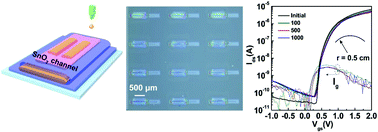
J. Mater. Chem. C, 2021,9, 11662-11668
https://doi.org/10.1039/D1TC01512E
Photon upconverting bioplastics with high efficiency and in-air durability
The accommodation of chromophore-dissolved microdroplets in semicrystalline protein matrices succeeds in achieving upconverting bioplastics with high efficiency, air-stability, and long-term durability for the first time.
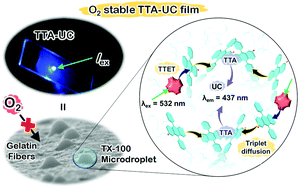
J. Mater. Chem. C, 2021,9, 11655-11661
https://doi.org/10.1039/D1TC00287B
Axial and helical thermally activated delayed fluorescence bicarbazole emitters: opposite modulation of circularly polarized luminescence through intramolecular charge-transfer dynamics
The design of novel chiral donor–acceptor emitters based on C2-symmetric bicarbazoles is reported together with their photophysical and CPL properties, both displaying an interesting modulation as a function of the solvent polarity.

J. Mater. Chem. C, 2021,9, 11905-11914
https://doi.org/10.1039/D1TC03019A
Assembly of USPIO/MOF nanoparticles with high proton relaxation rates for ultrasensitive magnetic resonance sensing
We develop a magnetic resonance sensor (MRS) based on the assembly of ultra-small superparamagnetic iron oxide (USPIO) nanoparticles and metal organic framework (MOF) materials, which have high T2 proton relaxation rates (r2).
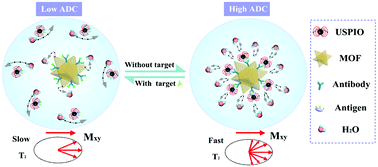
J. Mater. Chem. C, 2021,9, 11915-11923
https://doi.org/10.1039/D1TC01524A
Stimuli-responsive luminescent supramolecular assemblies and co-assemblies through orthogonal dipole–dipole interactions and halogen bonding
Naphthalene monoimide derivatives produced distinct stimuli-responsive luminescent nanostructures through orthogonal dipole–dipole interactions and halogen bonding (XB) with diverse graftable XB donors and acceptors in organic solvents.
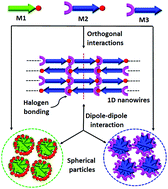
J. Mater. Chem. C, 2021,9, 11893-11904
https://doi.org/10.1039/D1TC02420E
Excited state mechanisms in crystalline carbazole: the role of aggregation and isomeric defects
The role of aggregation and isomeric impurities on the excited state mechanisms in crystalline carbazole are revisited considering exciton, Dexter energy transfer and electron transport based on Marcus and Marcus–Levich–Jortner theories.
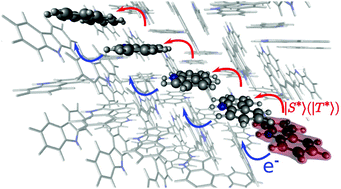
J. Mater. Chem. C, 2021,9, 11882-11892
https://doi.org/10.1039/D1TC02019F
Quantitative insights into the phase behaviour and miscibility of organic photovoltaic active layers from the perspective of neutron spectroscopy
Neutron spectroscopy as a master microscopic probe of the composition-dependent phase behaviour and miscibility of organic solar cell active layers.
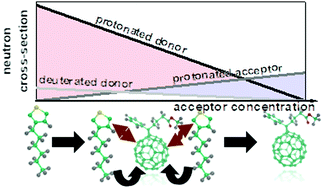
J. Mater. Chem. C, 2021,9, 11873-11881
https://doi.org/10.1039/D1TC01813B
Utilization of double-sensitized structure toward achieving high performance green and red phosphorescent organic light-emitting diodes
High performance green and red phosphorescent OLEDs with double-sensitized structure by using deep lowest unoccupied molecular orbital level iridium(III) complex as sensitizer.

J. Mater. Chem. C, 2021,9, 11729-11737
https://doi.org/10.1039/D1TC02756E
Understanding ultrafast charge transfer processes in SnS and SnS2: using the core hole clock method to measure attosecond orbital-dependent electron delocalisation in semiconducting layered materials
Electron delocalisation times are significantly faster for SnS than for SnS2. Ultrafast times, as low as 30 attoseconds, were measured thanks to the application of the core hole clock method.
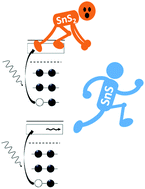
J. Mater. Chem. C, 2021,9, 11859-11872
https://doi.org/10.1039/D1TC02866A
Isothermal crystallization and time-temperature-transformation diagram of the organic semiconductor 5,11-bis(triethylsilylethynyl)anthradithiophene
The time-temperature-transformation diagram describing crystallization of the semiconducting molecule TES-ADT from its melt was constructed and found to correlate with the thin-film micro/nanostructure and electronic performance.

J. Mater. Chem. C, 2021,9, 11745-11752
https://doi.org/10.1039/D1TC01482J
Adenine-based polymer modified zinc oxide for efficient inverted organic solar cells
A nucleobase adenine (A)-based polymer passivates the defects, improves the conductivity, and reduces the work function of the ZnO nanoparticle interlayers, affording high performance inverted fullerene- or non-fullerene-based organic solar cells.
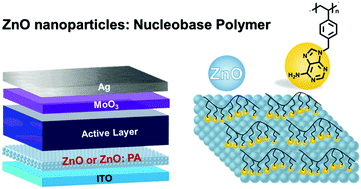
J. Mater. Chem. C, 2021,9, 11851-11858
https://doi.org/10.1039/D1TC01648B
Suppressed ion migration in powder-based perovskite thick films using an ionic liquid
Here we add BMIMBF4 during the mechanochemical synthesis of MAPbI3. Based on detailed photoluminescence and electrical measurements, we demonstrate a passivation of defects in the powder pellets that also leads to a suppression of ion migration.
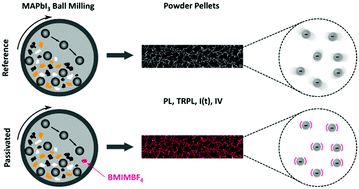
J. Mater. Chem. C, 2021,9, 11827-11837
https://doi.org/10.1039/D1TC01554K
Synergistic effect of carotenoid and silicone-based additives for photooxidatively stable organic solar cells with enhanced elasticity
Bifunctional additive design for OPV provides joint improvement in (1) device lifetime via carotenoid and (2) flexibility via silicone.
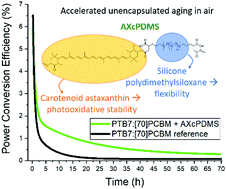
J. Mater. Chem. C, 2021,9, 11838-11850
https://doi.org/10.1039/D1TC01544C
Measuring the impact of spin-triplet exciton orientation on photocurrent in an organic transistor
Angle dependent magneto-photocurrent in organic single crystal transistors reveals the anisotropy of triplets, verified by a spin-Hamiltonian model with zero-field splitting, providing a basis for metrics of singlet fission–triplet fusion devices.
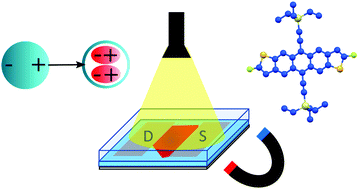
J. Mater. Chem. C, 2021,9, 11809-11814
https://doi.org/10.1039/D1TC01539G
Ultrathin oxysulfide semiconductors from liquid metal: a wet chemical approach
Liquid metal chemistry offers a new pathway towards the creation of functional 2D metal oxysulfides.

J. Mater. Chem. C, 2021,9, 11815-11826
https://doi.org/10.1039/D1TC01937F
A pyridinium salt with crystalline phase transformation under water vapor and reversible mechanochromic luminescent properties
The pyridinium salt of CPBBr undergoes crystalline phase transformation under water vapor, accompanied by emission turn-on from deep blue to green. The reversible mechanochromism luminescence indicates the formation of a charge transfer excimer.
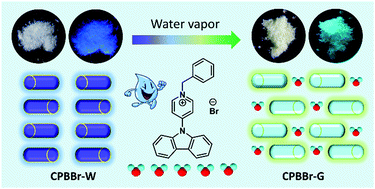
J. Mater. Chem. C, 2021,9, 11738-11744
https://doi.org/10.1039/D1TC01540K
A high endurance, temperature-resilient, and robust organic electrochemical transistor for neuromorphic circuits
A novel organic electrochemical transistor is proposed by adopting a dual-network hydrogel as the electrolyte.
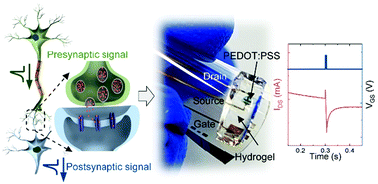
J. Mater. Chem. C, 2021,9, 11801-11808
https://doi.org/10.1039/D1TC02215F
Approximate models for the lattice thermal conductivity of alloy thermoelectrics
We develop and test three models for the lattice thermal conductivity of the Sn(S0.1875Se0.8125) alloy, and show that the reported lower κlatt relative to SnSe arises from reduced phonon velocities due to a “smearing” of the phonon dispersion.
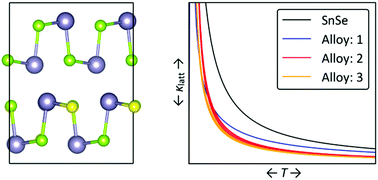
J. Mater. Chem. C, 2021,9, 11772-11787
https://doi.org/10.1039/D1TC02026A
Discovery of and insights into one-photon and two-photon excited ACQ-to-AIE conversion via positional isomerization
With bay- and ortho-substituted perylenetetracarboxylic diimide derivatives, one-photon and two-photon excited ACQ-to-AIE conversion is realized through simple positional isomerization.
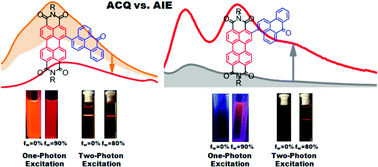
J. Mater. Chem. C, 2021,9, 11679-11689
https://doi.org/10.1039/D1TC01963E
Interpenetrating PAA-PEDOT conductive hydrogels for flexible skin sensors
Conductive hydrogels are promising material candidates in artificial skin and muscles, flexible and implantable bioelectronics, and tissue engineering.
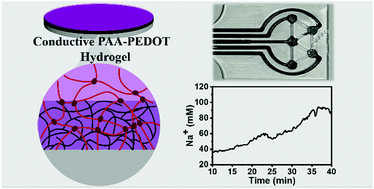
J. Mater. Chem. C, 2021,9, 11794-11800
https://doi.org/10.1039/D1TC01578H
Magnetic assembly and manipulation of Janus photonic crystal supraparticles from a colloidal mixture of spheres and ellipsoids
Janus photonic crystal supraparticles with novel structures and properties were magnetically assembled from a colloidal mixture of nonmagnetic spheres and magnetic ellipsoids.

J. Mater. Chem. C, 2021,9, 11788-11793
https://doi.org/10.1039/D1TC01543E
Electrochemical gating enhances nearfield trapping of single metalloprotein junctions
Metalloprotein junctions are used as model systems in the field of molecular bioelectronics to mimic electronic circuits. The junction lifetime increase achieved with electrochemical nearfield trapping enables thorough junction characterisation.
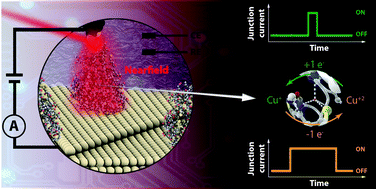
J. Mater. Chem. C, 2021,9, 11698-11706
https://doi.org/10.1039/D1TC01535D
Design of broadband near-infrared Y0.57La0.72Sc2.71(BO3)4:Cr3+ phosphors based on one-site occupation and their application in NIR light-emitting diodes
A novel broadband near-infrared Y0.57La0.72Sc2.71(BO3)4:Cr3+ phosphor based on one-site occupation was designed by introducing a distorted octahedral structure.
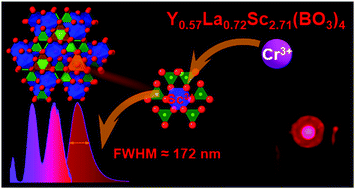
J. Mater. Chem. C, 2021,9, 11761-11771
https://doi.org/10.1039/D1TC01508G
Detection of polyamines by an extended gate-type organic transistor functionalized with a carboxylate attached 1,3,4-thiadiazole derivative
An extended-gate-type organic transistor functionalized with a carboxylate attached 1,3,4-thiadiazole derivative (TMT) allowed multi-polyamine discrimination based on a competitive assay among the TMT-based monolayer, copper(II) ions, and polyamines.
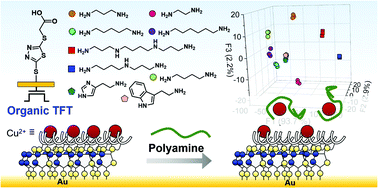
J. Mater. Chem. C, 2021,9, 11690-11697
https://doi.org/10.1039/D1TC01542G
Manipulating crystals through photoexcitation-induced molecular realignment
A photoexcitation-induced molecular realignment strategy is demonstrated to yield steady-state crystals with fluorescence–phosphorescence behavior.
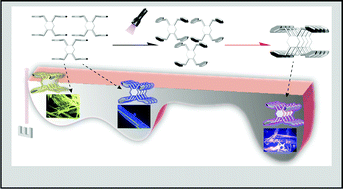
J. Mater. Chem. C, 2021,9, 11707-11714
https://doi.org/10.1039/D1TC01605A
Efficient hole transport layers based on cross-linked poly(N-vinylcarbazole) for high-performance perovskite photodetectors
The cross-linked PVK doping with F4TCNQ demonstrated outstanding hole extraction and transport capability, has been successfully used in p–i–n perovskite photodetectors as an efficient hole transport layer (HTL).
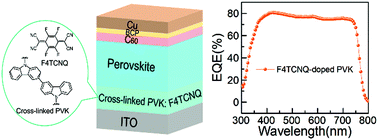
J. Mater. Chem. C, 2021,9, 11722-11728
https://doi.org/10.1039/D1TC01367J
Planar heterojunctions for reduced non-radiative open-circuit voltage loss and enhanced stability of organic solar cells
Planar heterojunction organic solar cells exhibit lower trap density, higher electroluminescence efficiency, smaller non-radiative open-circuit voltage loss and better stability than bulk heterojunction counterparts.
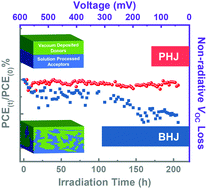
J. Mater. Chem. C, 2021,9, 11715-11721
https://doi.org/10.1039/D1TC01536B
An underestimated photoactive area in organic solar cells based on a ZnO interlayer
UV-induced doping reduces the resistance of the ZnO interlayer in an organic solar cell, leading to an increased photoactive area. This results in a significantly overestimated Jsc in the solar cell characterized without using a mask.

J. Mater. Chem. C, 2021,9, 11753-11760
https://doi.org/10.1039/D1TC00745A
About this collection
Journal of Materials Chemistry C is proud to present this themed issue highlighting 2021’s rising stars of materials chemistry research. This issue gathers the very best work from materials chemists in the early stages of their independent career.
Each contributor was recommended by experts in their fields as carrying out work with the potential to influence future directions in materials chemistry with applications in optical, magnetic & electronic devices. We would like to congratulate all the excellent researchers featured.